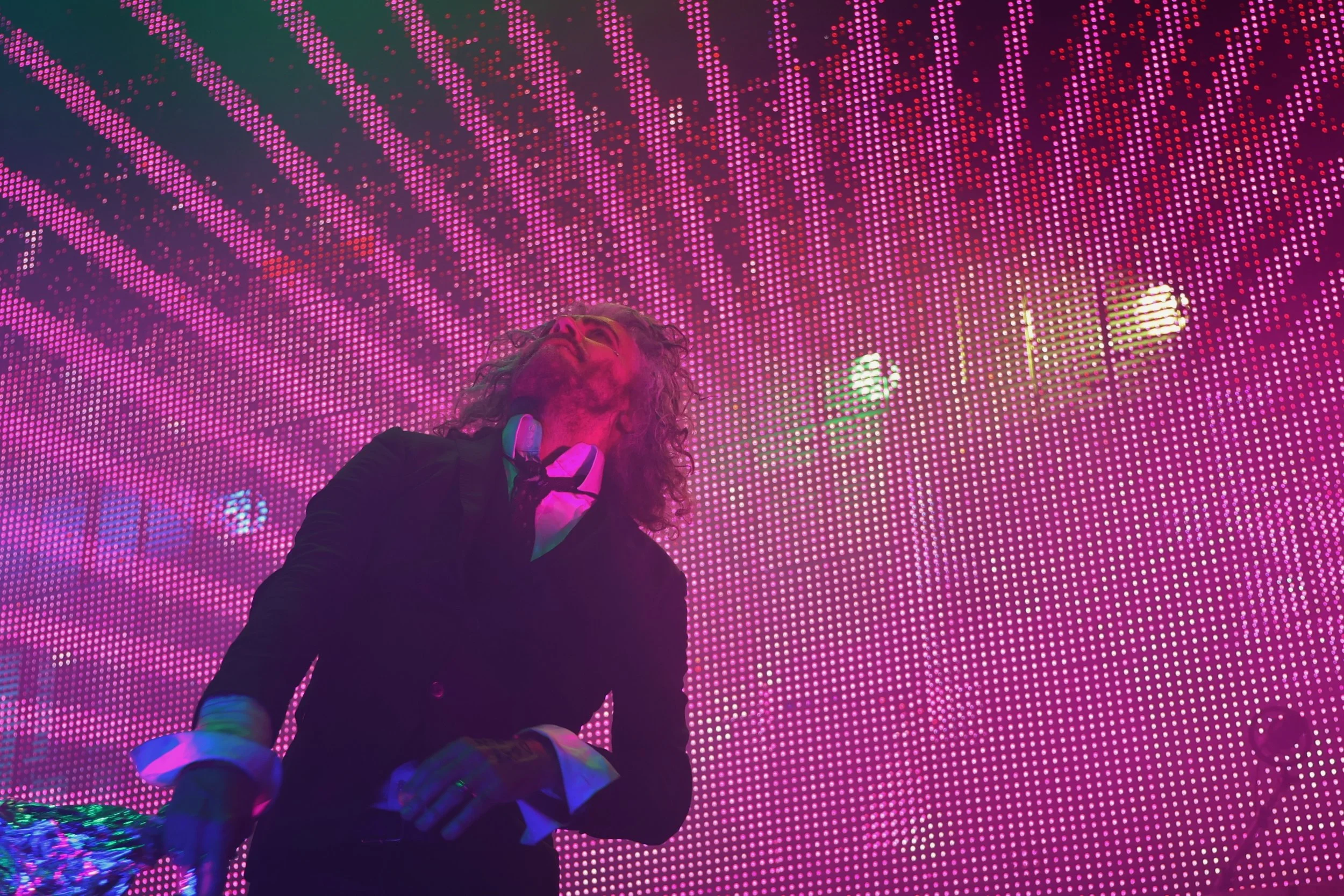Why the Elvi Roll

The reissue of "Elvis Aloha from Hawaii via Satellite" is a reminder that even the late period of Elvis had its moments.
Elvis Presley's enduring presence in New Orleans has a strong camp edge courtesy of The Rolling Elvi and Tucks' annual Elvis float and throws. Their Elvis is the late, jumpsuited, beefy Elvis, the one that has become a Halloween costume and iconic for more bad reasons that good. But Aloha from Hawaii via Satellite is a reminder of the that there was more to him than epic indulgence, pharmacological derring-do, and artery-clogging dietary choices. It features the killer band of James Burton on guitar, bassist Jerry Scheff, and drummer Ronnie Tutt, whose drumming out of the "Also Sprach Zarathustra" introduction into "See See Rider" is still energizing, even after hearing it as a part of almost every Elvis birth- and death day celebration.
The live concert recording represented Presley's attempt to reach foreign markets that were still hot for him, even when Vegas had started to cool on him. One biography of Col. Tom Parker contends that he wouldn't let Presley actually visit foreign markets because Parker was an immigrant who had entered the country illegally, so he couldn't travel abroad with Elvis without putting his status in the States at risk, but whatever, the show was an attempt to make Elvis cutting edge at a time when he was anything but, in this case by beaming a concert around the world in 1973 and releasing an accompanying live album in quadrophonic sound. Since quadrophonic never became more than a novelty, it was also released in standard stereo.
The album is accompanied by a second disc, a dress rehearsal without an audience that is more notable for what is missing than what's there. Despite all that was riding on the show for Elvis, he added "Johnny B. Goode" and the medley of "Long Tall Sally" and "Whole Lotta Shakin' Goin' On" between the rehearsal and the broadcast. Those weren't choices that would challenge the band, but they still show a low-grade daring streak. The bonus disc ends eccentrically with songs Elvis and the band cut live after the audience had been ushered out, most of which were released posthumously in 1978 on Mahalo from Elvis. The energy is much more low-key than it is throughout the show, and the highlight is a version of Gordon Lightfoot's "Early Morning Rain" that suits his voice and persona at this point in his career.
The one thing that is striking in retrospect is the near-punk pace with which Elvis gets in and out of songs. Few songs last three minutes, and many make their point in less than two minutes. Because of that, he crams 24 tracks into 62 minutes, but none of it feels thrown away. By this point, he was more than rock or popular singer, and the setlist reflects that. He honors his history, establishes a place in the present, and reaches for Hank Williams, James Taylor, The Beatles, and "An American Trilogy" to establish the parameters of his musical world. On Aloha from Hawaii via Satellite, he was big enough for that world.






